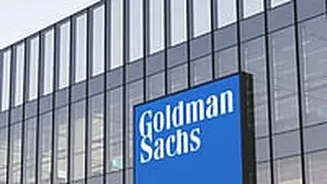Mumbai: Goldman Sachs has projected a potential repo rate cut by the end of 2025, bringing relief to borrowers across the country. The global investment bank believes that recent fiscal and policy developments
point toward the end of India’s current monetary tightening cycle. A cut in the key policy rate would directly lower EMIs on home, car, and other loans, providing more disposable income for consumers.
GST Reforms Signal Fiscal Flexibility
The report highlights the recent simplification of the Goods and Services Tax (GST) as a key signal that the most intense phase of fiscal consolidation may be over. According to Goldman Sachs, this shift, along with domestic regulatory easing, is likely to revive credit demand gradually. Lower compliance burdens and streamlined taxation may free up working capital for businesses and boost investment sentiment.
RBI Holds Rates Steady… For Now
The Reserve Bank of India (RBI), in its most recent Monetary Policy Committee (MPC)meeting, chose to keep the repo rate unchanged at 5.5 percent. However, Goldman Sachs believes that macroeconomic conditions are becoming favorable for further easing. The central bank’s statements have hinted that a 25 basis point (0.25 percent) cut could be on the cards, even though rates were held steady in the last policy review.
External Pressures and Economic Outlook
While internal indicators remain relatively strong, external challenges continue to weigh on India’s economic outlook. The Goldman Sachs report noted concerns such as rising immigration costs in the US—especially for H-1B visas—which may impact India’s IT sector. In addition, higher US tariffs on Indian goods and broader global uncertainty could dampen export growth and credit appetite.
Growth Forecast Revised Upward
Despite these global headwinds, India’s domestic environment remains positive. The RBI has revised its GDP growth forecast for FY26 upwards, supported by a favorable monsoon and recent tax reforms. These factors could provide the necessary cushion for the central bank to consider monetary easing while still maintaining macroeconomic stability.















